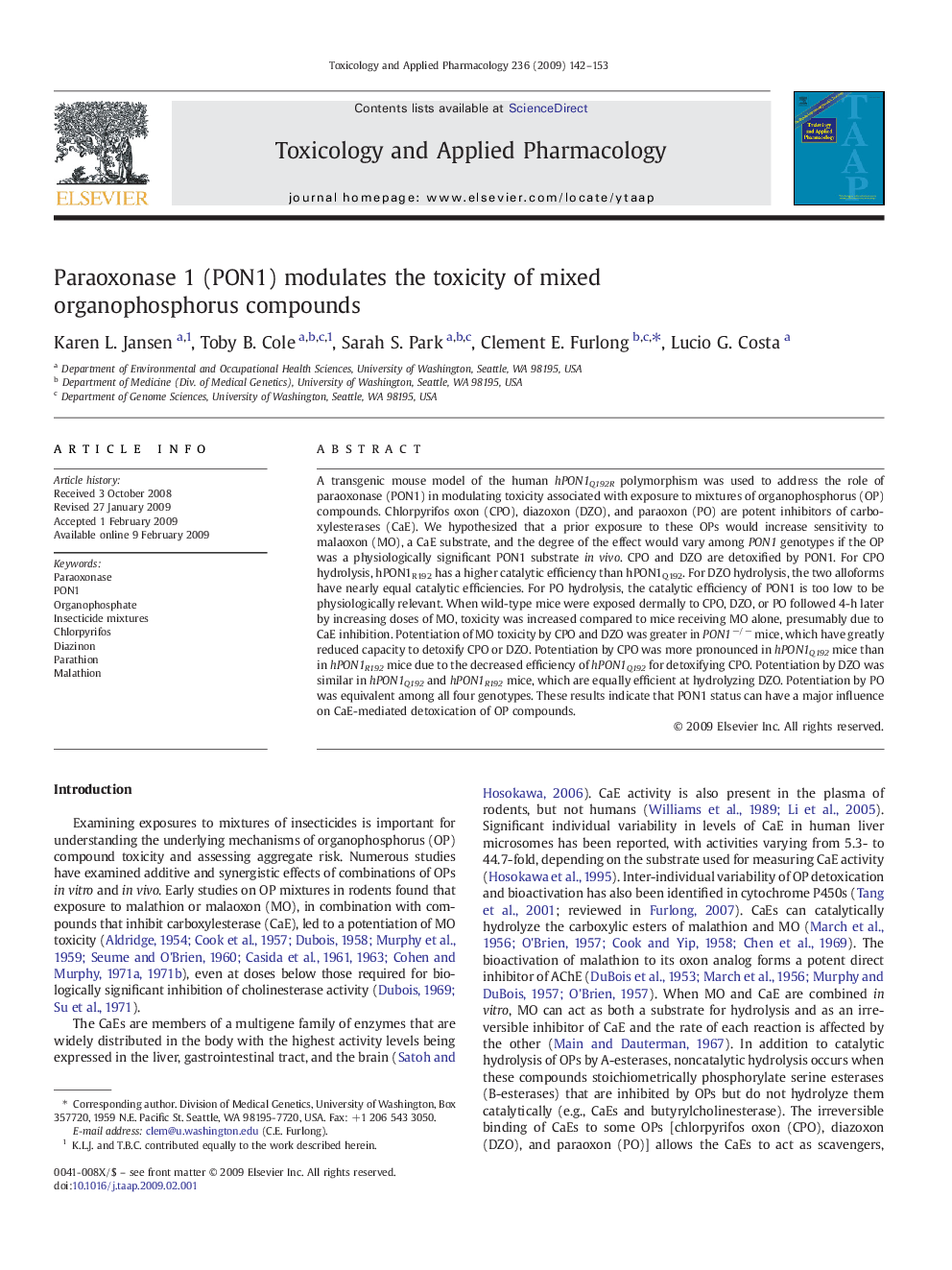| کد مقاله | کد نشریه | سال انتشار | مقاله انگلیسی | نسخه تمام متن |
|---|---|---|---|---|
| 2570661 | 1128596 | 2009 | 12 صفحه PDF | دانلود رایگان |

A transgenic mouse model of the human hPON1Q192R polymorphism was used to address the role of paraoxonase (PON1) in modulating toxicity associated with exposure to mixtures of organophosphorus (OP) compounds. Chlorpyrifos oxon (CPO), diazoxon (DZO), and paraoxon (PO) are potent inhibitors of carboxylesterases (CaE). We hypothesized that a prior exposure to these OPs would increase sensitivity to malaoxon (MO), a CaE substrate, and the degree of the effect would vary among PON1 genotypes if the OP was a physiologically significant PON1 substrate in vivo. CPO and DZO are detoxified by PON1. For CPO hydrolysis, hPON1R192 has a higher catalytic efficiency than hPON1Q192. For DZO hydrolysis, the two alloforms have nearly equal catalytic efficiencies. For PO hydrolysis, the catalytic efficiency of PON1 is too low to be physiologically relevant. When wild-type mice were exposed dermally to CPO, DZO, or PO followed 4-h later by increasing doses of MO, toxicity was increased compared to mice receiving MO alone, presumably due to CaE inhibition. Potentiation of MO toxicity by CPO and DZO was greater in PON1−/− mice, which have greatly reduced capacity to detoxify CPO or DZO. Potentiation by CPO was more pronounced in hPON1Q192 mice than in hPON1R192 mice due to the decreased efficiency of hPON1Q192 for detoxifying CPO. Potentiation by DZO was similar in hPON1Q192 and hPON1R192 mice, which are equally efficient at hydrolyzing DZO. Potentiation by PO was equivalent among all four genotypes. These results indicate that PON1 status can have a major influence on CaE-mediated detoxication of OP compounds.
Journal: Toxicology and Applied Pharmacology - Volume 236, Issue 2, 15 April 2009, Pages 142–153